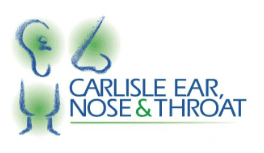Septoplasty is a surgical procedure performed entirely through the nostrils; accordingly, no bruising or external signs occur. Septoplasty may also be combined with sinus surgery. The time required for the operation averages about one to one and a half hours, depending on the deviation. It can be done with a local or a general anesthetic and is usually done on an outpatient basis in the office. During the surgery, badly deviated portions of the septum may be removed entirely, or they may be readjusted and reinserted into the nose. If a deviated nasal septum is the sole cause for your chronic sinusitis, relief from this severe disorder will be achieved.
Deviated Septum
The shape of your nasal cavity could be the cause of chronic sinusitis. The nasal septum is the wall dividing the nasal cavity into halves; it is composed of a central supporting skeleton covered on each side by mucous membrane. The front portion of this natural partition is a firm but bendable structure made mostly of cartilage and is covered by skin that has a substantial supply of blood vessels. The ideal nasal septum is exactly midline, separating the left and right sides of the nose into passageways of equal size.
Estimates are that 80 percent of all nasal septums are off-center, a condition that is generally not noticed. A “deviated septum” occurs when the septum is severely shifted away from the midline. The most common symptom from a badly deviated or crooked septum is difficulty breathing through the nose. The symptoms are usually worse on one side, and sometimes actually occur on the side opposite the bend. In some cases the crooked septum can interfere with the drainage of the sinuses, resulting in repeated sinus infections.
Septoplasty is the preferred surgical treatment to correct a deviated septum. This procedure is not generally performed on minors, because the cartilaginous septum grows until around age 18. Septal deviations commonly occur due to nasal trauma.
A deviated septum may cause one or more of the following:
-
Blockage of one or both nostrils
-
Nasal congestion, sometimes one-sided
-
Frequent nosebleeds
-
Frequent sinus infections
-
At times, facial pain, headaches, postnasal drip
-
Noisy breathing during sleep (in infants and young children)
Diagnosis of A Deviated Septum
Patients with chronic sinusitis often have nasal congestion, and many have nasal septal deviations. However, for those with this debilitating condition, there may be additional reasons for the nasal airway obstruction. The problem may result from a septal deviation, reactive edema (swelling) from the infected areas, allergic problems, mucosal hypertrophy (increase in size), other anatomic abnormalities, or combinations thereof. A trained specialist in diagnosing and treating ear, nose, and throat disorders can determine the cause of your chronic sinusitis and nasal obstruction.
Surgery may be the recommended treatment if the deviated septum is causing troublesome nosebleeds or recurrent sinus infections.
